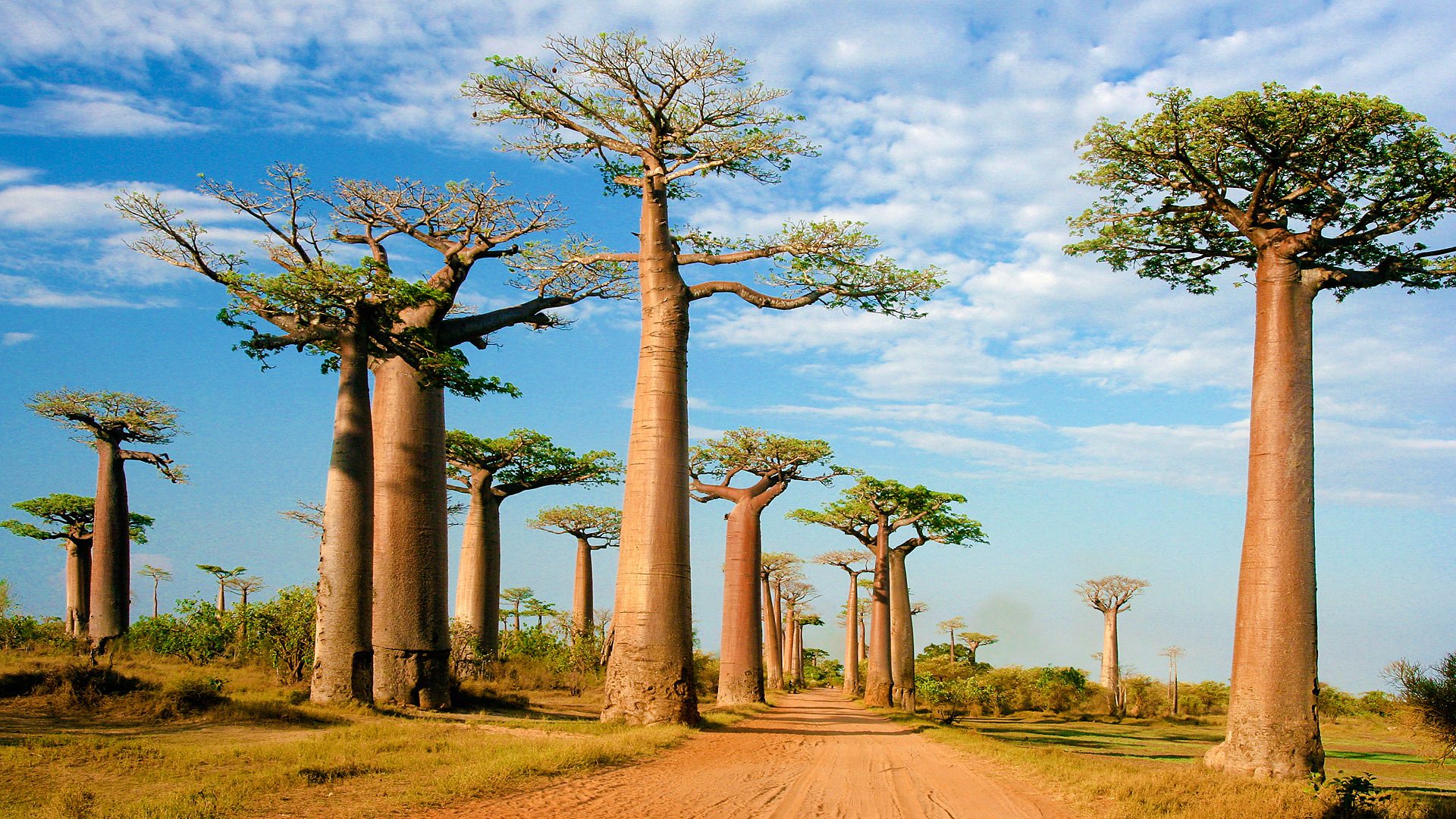Baobab trees
About
- Baobab trees are tall and uniquely-shaped deciduous trees which are famously spotted on the island of Madagascar.
- The trees belong to the genus Adansonia, which comprises eight distinct species:
- Adansonia digitata found in continental Africa,
- Adansonia gregorii in Northwestern Australia, and
- six other species endemic to Madagascar.
- Baobabs are known for their great heights, with some extending up to 50 metres.
- These trees have exceptionally long lifespans going upto 2,000 years.
Appearance
- The trees have trunks with large circumferences and thin, spindly branches.
- They are also called upside down trees because of their tops resembling an uprooted plant turned upside down
- They grow to a huge size and store large amounts of water in their trunks to survive through the dry seasons.

Uses
- These trees are considered as keystone species.
- In any ecosystem, such species provide essential resources, such as food or shelter, for a guild of animals in return for which the guild of animals provides an essential service, or mobile links, such as pollination or diaspore dispersal.
- The absence of keystone species can have destabilising effects on entire ecosystems, given their centrality to them.
- Their fruits are regarded as a super food and their trunk can be used to make fibres which are used for ropes or clothing.
- They produce large white flowers that open at dusk, attracting bats as pollinators, which travel vast distances to feed on their nectar, and they are important nesting sites for birds.
- In local cultures, the trees are also revered because of the multiple uses their parts have, with the fruits and seeds being edible, the seed oil is used for cooking and the bark fibre is used in clothing.
Study about the origin of ancient baobab trees
- According to DNA studies, the iconic trees first arose in Madagascar 21 million years ago.
- Their seeds were later carried on ocean currents to Australia and also to mainland Africa, evolving into distinct species.
Distribution in India
- Mandu, in Dhar district of Madhya Pradesh is the only place in India where baobab trees are found in abundance, with an estimated 1,000 trees in the periphery of Mandu town.
- Aside from Mandu, baobab trees have been recorded in Prayagraj (formerly Allahabad) in Uttar Pradesh, Wai in Maharashtra, and some places in Gujarat and Andhra Pradesh.
- The one near the Golconda Fort in Andhra Pradesh that is believed to be more than 400 years old.
What’s in the news?
- A new study has uncovered the origins of baobabs.
Sources
Subscribe
Login
0 Comments
